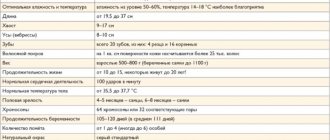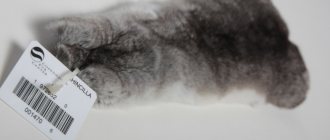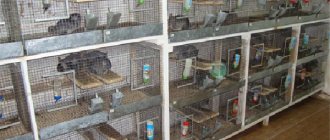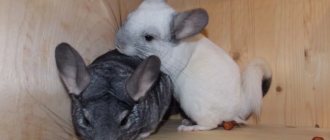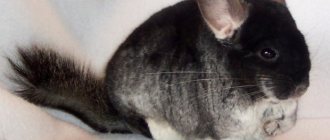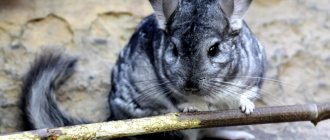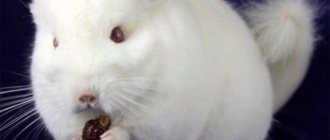One of the exotic ways of earning money, which allows you to get a good income with a small investment, is chinchilla breeding. They are valued for their valuable fur, which has the ability to resist moisture, but in most cases today they are not bred on an industrial scale, requiring the killing of animals, but are sold live in small batches for keeping as pets, which makes such a mini fur farm more attractive for those who wants to start a profitable small business.
Chinchilla breeding as a business
Description of the animals: external characteristics
These are herbivorous animals whose homeland is South America. They reach sexual maturity at 7-8 months of age. Pregnancy lasts for 3.5 months. Babies are born fully prepared for active development:
- with eyes open;
- with teeth;
- covered with wool.
At two months, puppies are already separated from their mother.
The animals have soft fur of different gray-blue colors, which does not harbor parasites, round ears and a long tail. Animals don't smell because they don't sweat. They live up to 20 years in captivity. The weight of an adult individual is from 600 to 700 g. Cubs at birth weigh 60-70 g. Chinchilla, the breeding of which does not require large investments and efforts on the part of the entrepreneur, can bear 2-3 litters per year with abundant feeding and proper maintenance of females, sale which will allow you to recoup all costs for the purchase of animals, materials for cages, food and bedding in the first 12 months. This is a nocturnal animal that does not make sounds.
Acquisition
The most important part of the business plan is the acquisition of the first animals. For a novice entrepreneur, it will be enough to purchase 10 females and 2 males. This will save costs on starting the project and will allow you to understand the nuances of chinchilla breeding without significant risk.
Healthy purebred specimens of popular coloring cost 6,000 rubles. – 9,000 rub. There are a dozen basic colors of chinchillas:
- White Wilson - very light fur all over the skin and black eyes.
- White velvet - the gray muzzle and paws stand out against a white background.
- White-pink is a slightly darker color than Wilson's White, with pink eyes.
- Beige - has several varieties, from dark to light, with pale eyes.
- Sapphire - light fur with a soft blue tint. This coloration is very difficult to obtain, and the animals subsequently require increased care.
- Purple is the main color closer to gray, with a slight tint.
- The standard color is the natural appearance of chinchillas: dark ash back and light belly.
- Black velvet (corduroy) - black top with a smooth transition to a light bottom, beige nose and black eyes.
- Ebony - varies from dark gray to completely black.
In addition, there are various shades obtained by combining basic ones or as a result of mutations. The most popular are chinchillas with standard coloring or black and velvet.
When choosing adult animals (7-8 months old), you need to pay attention to the following points:
- correct rounded head shape;
- short rounded ears;
- there is practically no neck;
- smooth back without visible thickenings;
- dense and elastic fur, thick over the entire surface of the body;
- weight approximately 600 grams;
- healthy, beautiful producers.
It is best to purchase chinchillas from farms that have been breeding animals for a long time. In a serious farm, management will provide a veterinary certificate and advise on maintenance and care.
Chinchillas naturally have strong immunity and do not need to be vaccinated.
Chinchilla: breeding for fur, meat and offspring
The destruction of animals in the wild, which put this unique species of animals on the brink of extinction, led to the fact that chinchilla breeding already at the beginning of the 20th century became a profitable business in North and South America, and then in Western Europe.
Chinchilla: breeding for fur, meat and offspring
The animals are very cost-effective to keep and allow breeders to receive:
- unique valuable fur if animals are raised on an industrial scale;
- medicinal dietary chinchilla meat ;
- fast growing offspring with a high percentage of survival of puppies, well adapted to life.
One fur coat requires at least one hundred skins. Animal fur is valued for its lightness, moisture resistance and wear resistance. Fur products made from chinchillas are expensive. All the leading breeders from Western Europe sell their furs at the famous fur auction in Copenhagen.
Chinchilla meat has medicinal properties. It is recommended for use by patients with diseases such as:
- tuberculosis;
- cancer;
- atherosclerosis.
Many restaurants specializing in exotic cuisine willingly cooperate with suppliers of such products, so breeders will be able to sell not only the skins of animals, but also their carcasses.
In addition to adult livestock used for fur and meat, you can sell the offspring, which is also in demand on the market not only among those who start chinchilla fur farms, but also among ordinary people who want to have a pet. The chinchilla is a unique animal that, unlike other rodents and domestic cats, does not smell. It lives long and does not require daily walking, like a dog. When kept at home, chinchillas only need cages, like hamsters and guinea pigs, and they will not cause any odor in the house. The animals are unpretentious and have their own character, which is also important when communicating with your pet.
Sales of products
Sales channels
Sales of products are possible in three directions:
- breeding animals to other farms;
- skins in studios and factories, as well as at auctions;
- dietary meat can be sold by advertisement or delivered to restaurants;
- small individuals to pet stores.
Beginning entrepreneurs and farmers whose production is constantly growing may need advertising. For these purposes you can use:
- Internet;
- leaflets;
- pet stores.
Instructions for opening a chinchilla fur farm
You can start breeding chinchillas even in a city apartment first by purchasing a pair of female and male animals, gradually expanding the volume of the fur farm. They do not take up much space, do not require special care, and do not create discomfort in the home. To organize a small fur farm you need:
- study breeding technology;
- purchase cages for keeping, food, bedding and special sand for bathing chinchillas;
- buy a couple of animals;
- prepare documents with the tax authorities for running an individual business and officially register an individual entrepreneur;
- immediately find potential buyers for the offspring, since at the first stage of such a business, profit is usually generated by the sale of animal puppies.
The main costs are the purchase of breeding animals. One adult animal costs from 6 to 9 thousand rubles. In the absence of initial capital, you can start with three individuals, from which you can get offspring for a full-fledged farm of 12-20 heads.
You can download the business plan Project for the creation and development of a mini-farm for raising chinchilla fur animals.
Equipment
Chinchillas are kept indoors in iron mesh cages 40-45 cm high. On the front wall there is a door, feeders and drinkers. A shelf for resting is attached to the back in the middle; the bottom is lined with pine sawdust. The cages are placed one on top of the other in several tiers and several rows in such a way that animals raised for different purposes are located separately:
- For fur, meat or tribe.
- Increase in livestock.
In addition to cells, you also need to purchase:
- feeders;
- drinking bowls;
- baths for bathing;
- pallets for sawdust;
- heater;
- air conditioner.
All equipment that comes into contact with chinchillas should not be made of wood, since these animals are rodents with very sharp front incisors. The exception is the breeding period, when a box for the young is placed in the cage.
Content
This is a heat-loving animal that lives in the dry climate of the highlands of South America, so the easiest way growing chinchillas
- temperature range from +18 to +20 degrees;
- humidity level 50%;
- protection from direct sunlight;
- low illumination of the cage space.
They eat grass and insects once a day in the evening. For proper maintenance, they only need to create the proper conditions once and feed and change the water once a day.
You will also need to clean the cage every day. Cleaning the cells will not cause discomfort and require much effort. The animals do not smell; the sand in which they bathe needs to be changed once a month. The bedding is changed once a week.
A family of one male and one female can live on one square meter. Also, at the first stage, you can create a family of two females and one male.
The animals are fed balanced granular food, which is sold in pet stores, as well as carrots, apples, fresh or dried herbs. When living in apartments, you need to regularly give vitamin complexes to support the immune system.
Business plan
A business plan will help you keep everything under control and get the maximum benefit from your new venture.
First, you should start calculating potential profits: from the amount of expected income (calculated by predicting the receipt of offspring), subtract the amount of estimated costs for the preparation and monthly maintenance of rodents.
Approximate costs of maintaining a livestock of 50 chinchillas:
- Chinchillas - 100-150 thousand rubles.
- Cages – 2 thousand rubles X 25 (2 animals per cage) = 50 thousand rubles.
- Feed – 1,000 – 1,500 rubles per day.
- Other expenses (electricity, taxes, veterinary care, advertising, etc.) – 20 – 30 thousand rubles.
- The income from 50 chinchillas is easy to calculate: offspring of 300 puppies per year will bring about 1 million rubles.
When drawing up a business plan, you should take into account that breeding animals cost about $100, which is 2 times more expensive than pets, and the cost of a skin is approximately $80.
Pet outside the cage
When purchasing a chinchilla, you should remember that such a pet is quite wayward, and he prefers to lead an independent life . A chinchilla should not be constantly pulled out of its cage (especially during the day), or squeezed and tugged, like, for example, a cat, since such animals do not want to be in close contact with their owner. Most of all, they do not like to be forcibly picked up.
Despite this, if you treat such a pet carefully and attentively, he will gladly expose his head to be scratched, and he will not refuse to eat some treat from your hands. If you pick up a chinchilla by force, this will lead to stress, which shortens the animal's life .
Chinchillas are extremely curious animals, so it is best to let them run around a little .
Before you let your pet out, it is important to make sure that the place where he will run is safe enough. There should be no wires or any other dangerous objects within the animal’s reach that the pet might start chewing.
To protect your animal and your property, you can purchase a special playpen for pets.
Tamed chinchillas rarely bite, but they need to be handled with care and attention . When your pet is picked up, it is important to make sure that he is comfortable.
You cannot walk with a chinchilla on a harness on the street. Not only is it not recommended for chinchillas to wear a harness, but they can also pick up more infections outdoors. Therefore, if it is not possible to let your pet out in a safe room, then it is best to keep it in a large cage, which will have various devices so that the chinchilla can lead an active lifestyle.
Mini-farm registration
At the initial stage, there is no need to officially register a chinchilla business, since it will take about six months to raise the first litter, from which several individuals can be sold.
Before implementation, you need to choose one of the registration options:
- Individual entrepreneur. Suitable for a single business owner.
- Farming. Relatives can participate in the enterprise, but for this it is necessary to draw up an agreement.
To pay taxes, it is most profitable to choose a single agricultural tax at a rate of 6% of profit.
No license or other permits are required to raise chinchillas. It is necessary to register with the veterinary service.
